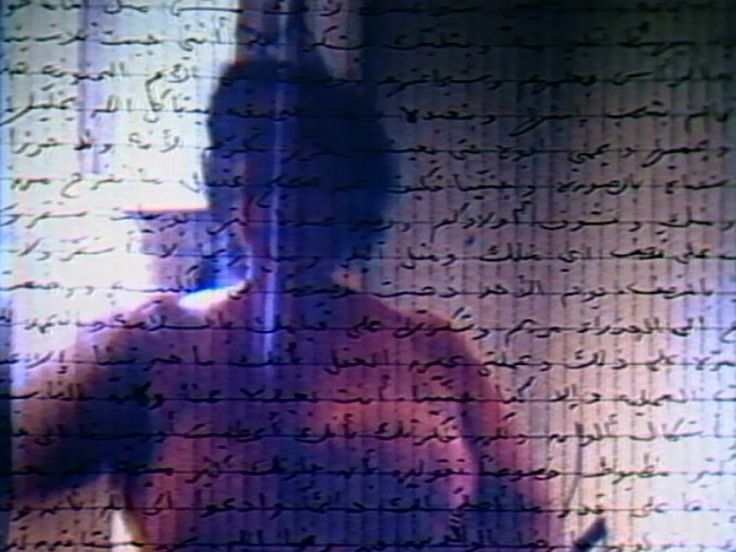
Letters from a Palestinian woman living in war-torn Lebanon to her daughter, whom she has not seen for years, and a series of photographs of the woman, convey the effects of war and exile on personal and cultural life, and nuances of family relationships.
EN
“I was living in Berlin when I first saw Measures of Distance. At the time, the biographical particularity-born in Santiago de Chile to a Palestinian mother and living in Germany-began to resonate. I think that this realisation turned into a base from which I tried to articulate my work thereafter. There are many dislocations in the video that I identify with. The geographical and cultural distance of the languages on the one hand and the temporal and spatial transfers on the other; double fixed image, as with the mother's body and the written text; past conversations (in the mother's letters); the artist's English language voice over, which allows her to distance herself from what has already been said. As we endeavour to articulate our present the medium of video allows us to revisit other mediums like photographs, and travel to other temporalities.
I project myself onto the video in countless ways, but what resonates most deeply is the conversation with the mother, a conversation I never had.”
Claudia Aravena Abughosh1
“In this work I was also trying to go against the fixed identity that is usually implied in the stereotype of Arab woman as passive, mother as non-sexual being the work is constructed visually in such a way that every frame speaks of literal closeness and implied distance.”
Michael Archer, Guy Brett, Catherine de Zegher, Nancy Spector2
“Hatoum's Measures of Distance and Akerman's News from Home are epistolaries that are also daughter-texts, structured around one-way mother-todaughter letters. In both cases, the mothers reside at home while their daughters are abroad. Voice, language, and text are woven intricately, producing free indirect discourses that contain various inscriptions and erasures of the daughters and of their mothers. Hatoum's video is structured by letters she has received from her mother in Lebanon. The relationship of the writer, addressee, and reciter of the letters is complex, as is the relationship of spoken and written Arabic with spoken English. Both sets of relations are fraught with exilic erasure and inscription. The mother is visually inscribed by her still pictures in the nude and by her handwritten letters. The voice reading her letters is not hers but that of her daughter, who reads them not in Arabic, which is displayed on the screen, but in English translation. The mother's voice is heard only in the Arabic conversations with her daughter in the background of the letters' voice-over. The daughter, on the other hand, is visually erased from the film, but she is inscribed both by her voice-over and by being the subject of the letters' address. [...] The conjoining of the mother's words with the daughter's voice in the face of patriarchal challenge binds mother and daughter diegetically and bonds them epistolarily across the oceans, creating a consoling fantasy of maternal symbiosis. This is emphasized further by the untranslated mother-daughter phatic banter in Arabic, which had threatened the husband/father. The mixing of background banter with foreground voice-over creates an overall female consciousness and female solidarity, challenging the hegemony of patriarchal culture and mode of narration.”
Hamid Naficy3
- 1Claudia Aravena Abughosh, introduction to Measures of Distance, Sharjah Art Foundation, 2021.
- 2Michael Archer, Guy Brett, Catherine de Zegher, Nancy Spector, Mona Hatoum (New York; Phaidon, 1997), 140.
- 3Hamid Naficy, An Accented Cinema. Exilic and Diasporic Filmmaking (New Jersey: Princeton University Press, 2001), 129-131.

